Cutest little owls I ever did hold!
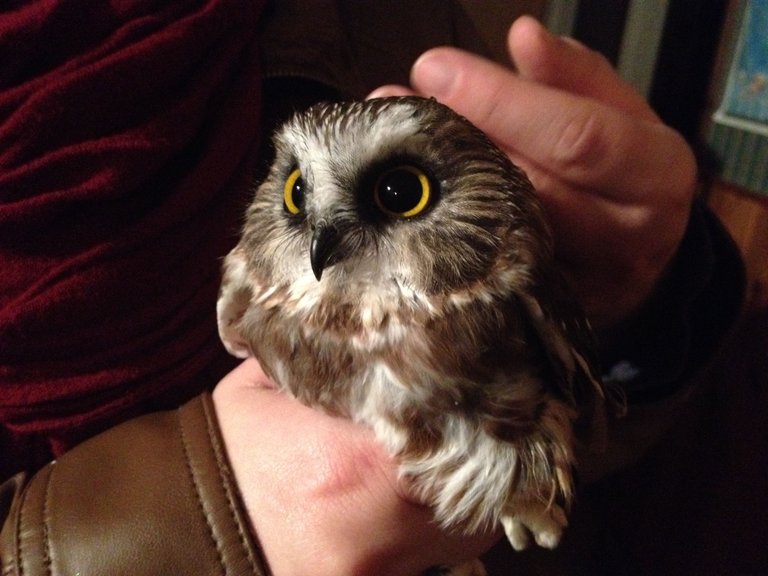
I thought I would share the story behind my profile picture today, which is just the above photo run through a filter on the prisma app.
A few years ago, in 2014, I was given the opportunity to tag along with a biology class to assist, and mostly just observe an owl banding effort near my city. Even though it was years ago, it was a unique experience that I enjoy looking back on.
The owls we were working with are called Saw-Whet owls. This is supposedly because of the sound they make sounding like a saw on a whet stone. The only sound I've ever heard them make, however, is a little repeating hoot.
They are one of the smallest owls in North America. According to the ornithologist we were working with they are quite common, but also excellent at hide and seek. If you have spent much time in the outdoors of North America you have likely been very near them on several occasions and had no idea they were there.
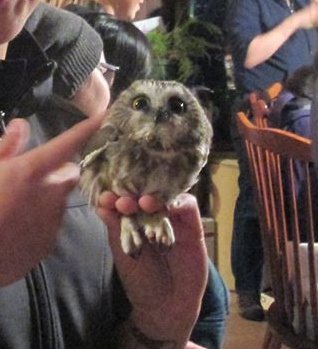
Some, though not all, of these adorable little owls are migratory. Their migration patterns and the reasons only some migrate, have not been well understood for many years. This is in part due to their nocturnal nature, and in part due to their tendency to shy away from people. This is what led to the beginning of Project Owlnet in the 1990's, which was a collaborative effort to band and track these little guys, so that we could understand them better. Which is how I came across the opportunity to hold one of them and learn more about them and the efforts to understand them.
Researchers across North America use the call of the saw-whets to lure them into mist nets in the evening. Thousands of these little guys are banded and tracked every fall.
Once they have been caught in the mist nets, they are brought inside to be weighed, measured, checked over for general health and banded. In order to weigh them they are put into small tin cans and set on a scale so they cannot fly away. As horrible as it may sound it is actually quite comfortable for these little guys, as they tend to live in tree cavities and abandoned nests which are often fairly tight quarters. The snug fit and darkness helps to keep them calm and feeling safe.
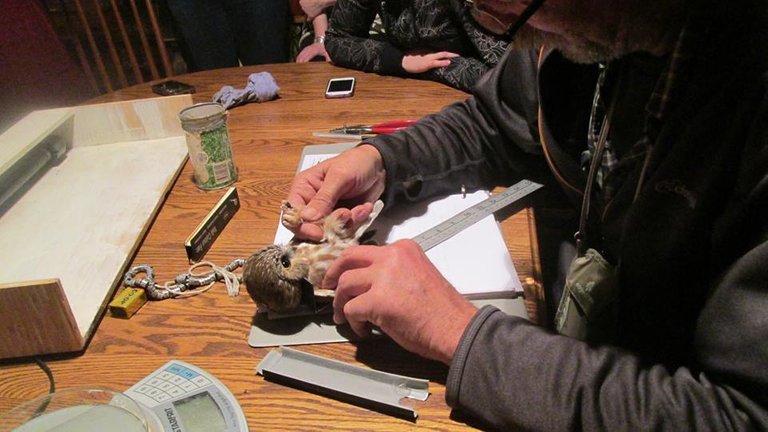
Saw-whet owls generally feed on small rodents such as mice and shrews, but have been known to eat other small birds, squirrels and even frogs depending on what is available. Because of their size they are at risk of becoming prey for larger raptors, such as other owls, hawks or eagles. This is why they tend to be a little reclusive, keeping to well sheltered nesting spaces.
Unlike some other birds there is no visual difference between the male and female owls excepting that the females are often larger than the males. Females generally weigh around 100g while males tend to weigh around 75g.
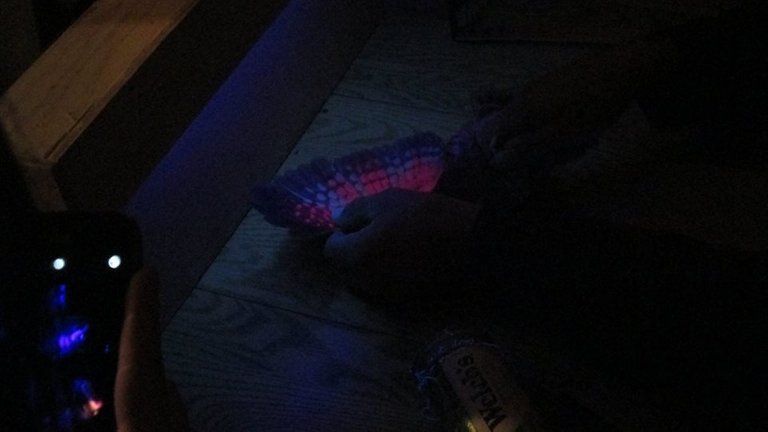
Something I found really interesting is that the flight feathers of these little guys turn bright pink under UV light. Apparently this can be used to estimate the age in adult owls. I believe this has to do with when they molt, but I am not certain.
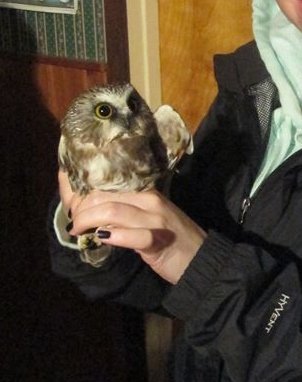
Besides all of that, they are really just the cutest little things, and I really enjoyed getting to be a part of the efforts to understand them a little better. It's not everyday you get to hold an owl, even a tiny one!
Please forgive the image quality, as camera phones were not quite as good 7 years ago as they are today!